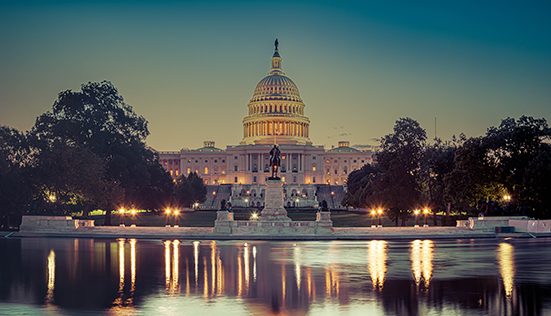History of the AMA
Today, it seems only logical that motorcyclists would have their own organization to advocate for the issues that matter to them.
But at the time the AMA was founded, in 1924, it was a revolutionary concept.
To fully understand the emergence of the AMA as the world’s premier member-driven motorcycling organization, it is first necessary to understand the forces that led to its creation. In large part, the roots of the AMA can be traced to two organizations that preceded it: the Federation of American Motorcyclists (FAM) and the Motorcycle and Allied Trades Association (M&ATA).
The Early Years
The formation of the Federation of American Motorcyclists can be traced to the New York Motorcycle Club, whose members assembled a committee in 1903 to study the need for a national motorcyclist association. On September 7, 1903, the FAM was officially formed at a clubhouse in Brooklyn. The meeting was chaired by George H. Perry, and one notable attendee was George M. Hendee of the Indian Motocycle Company, who brought 109 membership pledges from the New England area.
The mission of the newly created FAM was stated as follows: “Its objects shall be to encourage the use of motorcycles and to promote the general interests of motorcycling; to ascertain, defend and protect the rights of motorcyclists; to facilitate touring; to assist in the good roads movement; and to advise and assist in the regulation of motorcycle racing and other competition in which motorcycles engage.”
The FAM persisted for more than a decade, listing 8,247 members in 1915, but with World War I draining potential members, the organization went out of business in 1919.
Throughout the years of the FAM’s existence, the fledgling American motorcycle industry gained strength and vitality, represented by the formation of numerous motorcycle industry trade associations, the strongest of which was the Motorcycle & Allied Trades Association, founded in 1916. Although it was controlled by the motorcycle industry, the M&ATA Educational Committee began registering riders and clubs and supporting motorcycle activities in 1919, filling the void left by the failing of the FAM. Also that year the M&ATA began supporting the annual Gypsy Tours, attracting even more members as a result. The year 1919 was also the first year that the M&ATA Competition Committee issued national championship medals, recognizing 11 national championships that year.
Following five years of steady growth, the Educational and Competition Committees were reorganized under the name of the American Motorcycle Association on May 15, 1924 — the official formation of the AMA. The new AMA was formed by the M&ATA specifically to control rider registration and activities, issue sanctions for national events, and serve motorcycle industry members. The registered M&ATA riders — numbering almost 10,000 members in 1924 — were transferred as AMA charter members, while individual AMA membership dues were set at $1 per year. The official ratification of the AMA became effective on August 1, 1924, and the first national event operated under an AMA sanction was most likely the second annual National Six Days Trial, held from Aug. 25 through 30 in Ohio and adjacent states. This was a 1,400-mile endurance run that started and finished in Cleveland.
Advocacy & Government Relations
Since its inception in 1924, the AMA has been concerned with the public image of motorcycling. Early statements dealt with the safe and responsible operation of vehicles, and particularly with the subject of noise. Concerns about restrictive government action against the motorcycling community were among the primary reasons behind the original formation of the AMA.
It wasn’t until a rash of legislation in the 1960s, though, that motorcycling organizations began to realize how important legislative activity would become to the future of the sport. At that time, the AMA saw the need to focus on laws and regulations threatening riders. This led to the formation of the AMA’s Legislative Department (which later became known as the Government Relations Department), with a mission to “coordinate national legal activity against unconstitutional and discriminatory laws against motorcyclists, to serve as a sentinel on federal and state legislation affecting motorcyclists, and to be instrumental as a lobbying force for motorcyclists and motorcycling interests.”
For the road rider, the AMA Government Relations Department has spent decades wrestling with national, state and local legislation in such areas as mandatory helmet use, bike bans and rider-education programs. On the off-road side, the AMA has consistently fought to protect reasonable access to public land for trail riders. This issue has taken on greater importance with the introduction of wilderness legislation in many states over the past decades. Recognizing the growing need for direct involvement in the nation’s capital, in 1991 the Government Relations Department opened a satellite office in Washington, D.C. That was followed in 1994 by the opening of a second satellite office in Los Angeles to provide on-the-spot support for West Coast issues.
Riding & Riding-Related Activities
During the early years of motorcycling, organized road-riding events proved to be immensely popular with the riding public. Some of the first and most popular of these events were the AMA “Gypsy Tours,” which soon became the biggest road-riding events of the year. Gypsy Tours were held on a single weekend, featuring a ride to a scenic location for a picnic and various motorcycle competition events including hillclimbs and dirt-track events, along with field meet activities. In 1925, 212 individual Gypsy Tours were held across the country.
The biggest step the AMA has taken in advancing the interests of road riders took place in 1976 when the AMA formally established a separate road-riding program and hired a full-time road-riding development manager. In addition to overseeing AMA chartered club activities and sanctioned riding events, the department ensures members have the opportunity to be recognized for annual and lifetime mileage through the AMA LongRider program.
The AMA’s expansive network of chartered clubs and promoters carry on that Gypsy Tour legacy today, organizing more than 1,000 recreational riding events annually — now including road rides as well as dual-sport and adventure touring rallies.
Racing & Competition
When it was founded in 1924, the American Motorcycle Association had an instant commitment to motorcycle competition. While two competition events of 1924 were listed as AMA Records in the January 8, 1925, issue of Motorcycle and Bicycle Illustrated, the first full competition year for the AMA was 1925. During that year, 56 race meets were held and 14 national championships were awarded. The championships were awarded for races of various lengths featuring motorcycles of 500cc and 1,000cc, as well as sidecars.
Through those early years, the premier style of racing in the U.S. was designated Class A, a formula that allowed manufacturers to build exotic one-off racing machines. By the early 1930s, though, these expensive factory teams were scaled back as a result of the Great Depression. To combat this trend, in late 1933 the AMA Competition Committee created Class C, which called for the use of 750cc side-valve and 500cc overhead-valve machines based on stock production components. Only minor modifications were allowed, and fuel was limited to pump gas only. Key races in the early days included the Daytona 200, first held on the old beach course in 1937, and the Laconia Classic in New Hampshire, which was already a popular annual event when Class C got its start.
All organized motorcycle racing was suspended during World War II. Soon after the war ended, dirt-track racing grew in popularity to become the premier form of American motorcycle racing in the postwar years, and the Grand National Series raised this form of competition to its highest level. The series combined four dirt-track variations — mile, half-mile, short-track and TT racing — with road racing to crown the best all-round rider.
Off-road competition saw a tremendous increase in the 1960s. The development of lightweight motorcycles resulted in heightened enthusiasm for hare scrambles, enduro riding and desert racing. In 1961, the AMA approved rules for a new form of racing called motocross. Motocross and its indoor offshoot, AMA Supercross, have since grown into huge popularity, with the AMA Supercross series consistently attracting the largest crowds of any type of American racing. In recent years, the AMA Supercross and motocross series have begun to attract some of the top talent from around the world.
In the late 1970s, road racing was given separate championship status by the AMA, and production-based AMA Superbike racing soon evolved into the premier class. Today professional roadracing in America is operated separately under the umbrella of the MotoAmerica professional road racing series, sanctioned by the AMA. The MotoAmerica series has built a strong platform and set professional road racing in America on a new path for success.
The Modern AMA
During the summer of 1976, the name was changed from the American Motorcycle Association to the American Motorcyclist Association to better reflect its service to motorcyclists. In 1993, another important milestone was reached when, for the first time, AMA membership topped 200,000. Since its founding in 1924, the AMA has evolved from a national club into the only national organization devoted to serving all of America’s motorcyclists.
From a part-time staff of one, it has grown to include many dedicated full-time employees and a host of volunteers all working for the betterment of motorcycling. Today, the American Motorcyclist Association is one of the largest member-based motorcycle advocacy organizations in the world, and it actively serves its mission to promote the motorcycle lifestyle and protect the future of motorcycling for generations to come.






